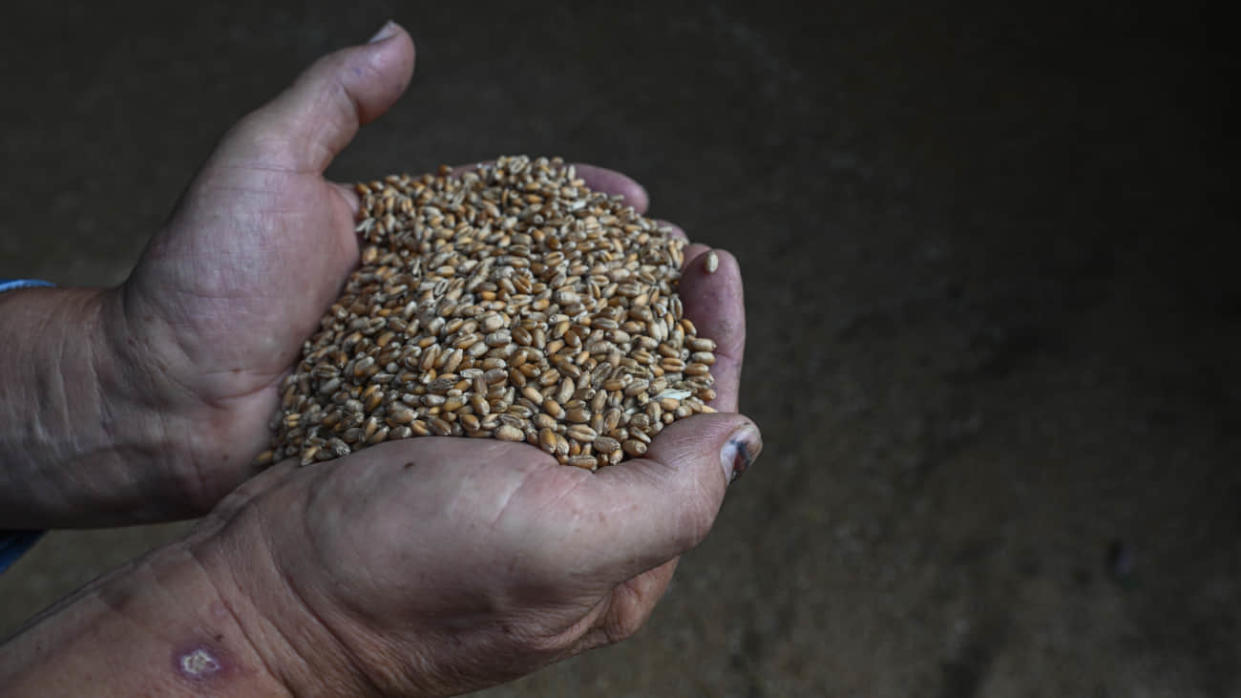Ukrainian grain export rates via Black Sea almost back at pre-war levels

The rate of agricultural exports via the Black Sea grain corridor has almost returned to pre-war levels, and the cost of cargo insurance has fallen significantly.
Source: Leonid Kozachenko, President of the Ukrainian Agrarian Confederation (UAC), on Ukrainian Radio
Details: Kozachenko recalled that before the full-scale invasion started, the Black Sea terminals were the main route for grain supplies for export.
Quote: "On average, we used to export 7.5-8 million tonnes of grain every month. Now we have passed this milestone, and this means that capacity is almost restored – although the Mykolaiv and Kherson terminals are not operating now, their restoration still lies ahead. But what has been done is hugely important."
Kozachenko said that to protect the maritime export corridor, Ukraine has installed "new weapons on the Black Sea shores that hit enemy targets interfering with grain transportation".
He also praised the support of the UK, which has declared its readiness to use military aircraft to escort ships owned by British companies.
"It is very significant that a British insurance company was the first to insure transportation. Now there are four companies that insure transportation, and the cost of insurance has significantly decreased. Today, it is 1.25% of cargo value. And it started at 7%. Since we have shown that we can protect these ships, the cost of insurance has fallen significantly," the UAC president said.
Kozachenko emphasised that finding a solution to seaborne export problems is crucial for Ukrainian farmers given that the cost of logistics has quadrupled, forcing them to reduce the amount of winter crops they sow.
He said several small and medium-sized farmers in Ukraine have started attempting to export grain on their own.
The list of such legal entities has grown by 1,500 over the last two years. They are mainly small businesses that used to export grain by rail or road. The primary recipient of their products was the EU; big businesses were drawn to places like China, India and the Middle East.
"This system that had built up began to crack when the Poles started blocking the border, and now this issue is very acute. After all, the EU is very afraid when such corridors are open, and everyone, particularly small and medium-sized farmers, can directly supply their products to the EU. They consider our small farms of 2,000 or 5,000 hectares to be agricultural holdings. Similar European farms live on subsidies," the UAC president explained.
Background:
The Ministry of Infrastructure has named two conditions for rebuilding the port in Kherson.
The main condition is the liberation of the left (eastern) bank of Kherson Oblast. The second necessary condition is the cessation of attacks on Kherson.
The Dnipro River is the main navigable artery in Ukraine. Cargo that went along the Dnipro was transported in transit through the Port of Kherson in the direction of deep water and then loaded on Panamax vessels in the roadstead of Ochakiv or Odesa.
Support UP or become our patron!

